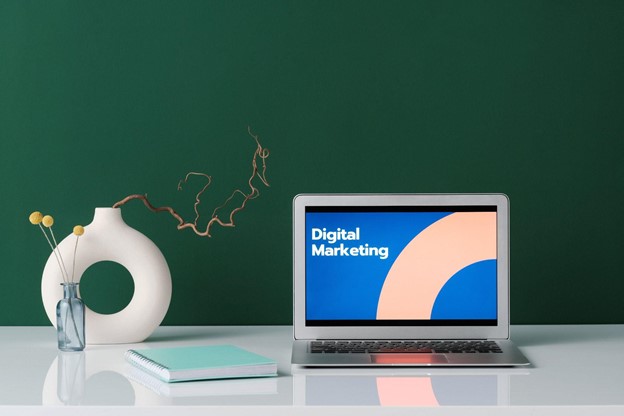In today’s digital age, businesses have a multitude of tools at their disposal to connect with potential customers. One of the most effective and widely used methods is online paid advertising. If you’re new to the world of online advertising, this beginner’s guide is your key to understanding the fundamentals, getting started, and achieving your marketing goals.
Understanding Online Paid Advertising
Online paid advertising, often referred to as pay-per-click (PPC) advertising, is a digital marketing strategy where businesses pay a fee each time their ad is clicked. It’s a way to buy visits to your website, as opposed to generating organic visits through search engine optimization (SEO). The primary goal of paid advertising is to attract the right audience to your website, thereby increasing your chances of converting visitors into customers.
Types of Online Paid Advertising
There are several types of online paid advertising, each with its unique advantages and ideal use cases:
- Search Engine Advertising:
Search engine advertising involves placing ads on search engine results pages (SERPs). Google Ads, formerly known as Google AdWords, is a popular platform for this type of advertising. It allows you to bid on specific keywords related to your business and display your ads to users searching for those keywords.
- Social Media Advertising:
Social media advertising is all about promoting your content and products on popular social platforms like Facebook, Instagram, Twitter, and LinkedIn. This form of advertising is highly effective for reaching and engaging with specific demographics and interests.
- Display Advertising:
Display advertising involves the placement of visual ads, such as banners and rich media, on websites and apps. These ads can be either static or interactive and can be a great way to increase brand visibility and recall.
- Video Advertising:
Video advertising is centered around the promotion of video content on platforms like YouTube. It’s a compelling way to tell a story, demonstrate a product, or engage your audience through the power of video.

Getting Started with Online Paid Advertising
Here’s a step-by-step guide for beginners eager to dive into the world of online paid advertising:
- Set Clear Goals:
The first step is to define your advertising goals. What do you hope to achieve with your campaigns? Are you looking to drive website traffic, generate leads, increase sales, or boost brand awareness? Setting clear objectives will guide your strategy.
- Choose the Right Platform:
Your choice of advertising platform should align with your goals and your target audience. If you want to reach users actively searching for your products or services, Google Ads is a preferred choice. For brand awareness and engagement, social media platforms like Facebook and Instagram are valuable options.
- Keyword Research:
Identify the keywords and key phrases relevant to your business. Comprehensive keyword research will help you understand what your potential customers are searching for. Tools like Google Keyword Planner can assist you in finding the right keywords and estimating their search volume and competition.
- Create Compelling Ad Copy:
Your ad copy plays a pivotal role in attracting users and encouraging them to click on your ad. Craft persuasive ad copy that encapsulates the essence of your product or service. A well-structured ad includes a compelling headline, an informative description, and a clear call to action.
- Optimize Landing Pages:
Once users click on your ad, they’ll be directed to a landing page on your website. It’s crucial that this page is relevant, loads quickly, is mobile-responsive, and has compelling content that encourages visitors to take the desired action, whether that’s making a purchase, filling out a form, or signing up for a newsletter.
- Budget Allocation:
Determine your daily or monthly budget based on your campaign objectives and the competitiveness of your chosen keywords and platform. It’s a good practice to start with a manageable budget and gradually scale it up as you gather experience and confidence.
- Monitoring and Optimization:
Paid advertising isn’t a “set it and forget it” strategy. Regularly monitor your campaign performance, and be ready to make adjustments. Key metrics to track include click-through rates (CTR), conversion rates, and cost-per-click (CPC). Use this data to make informed decisions and fine-tune your campaigns.
- A/B Testing:
A/B testing, or split testing, involves experimenting with different variations of your ads or landing pages to determine which performs better. It’s a valuable technique for optimization. Test different ad copy, images, headlines, and calls to action to discover what resonates most with your audience.
- Learn from Data:
Success in online paid advertising hinges on data-driven decisions. Continuously analyze the data to understand what’s working and what needs improvement. Be open to learning from both your successes and setbacks.
- Seek Professional Assistance:
If you find online paid advertising to be overwhelming or if you lack the in-house expertise, consider working with a digital marketing agency in Singapore like Midas Digital. They can provide valuable insights, help you create effective campaigns, and manage your ad spend efficiently.
Conclusion
Online paid advertising is a dynamic and results-driven strategy for driving traffic, increasing leads, and growing your business. As a beginner, it’s essential to start with a clear strategy, choose the right platform, and continuously optimize your campaigns based on data and insights. With dedication and a commitment to learning, you can harness the power of online paid advertising to reach your target audience and achieve your marketing goals. Remember, paid advertising is a journey of continuous improvement in an ever-evolving digital landscape.






0 Comments